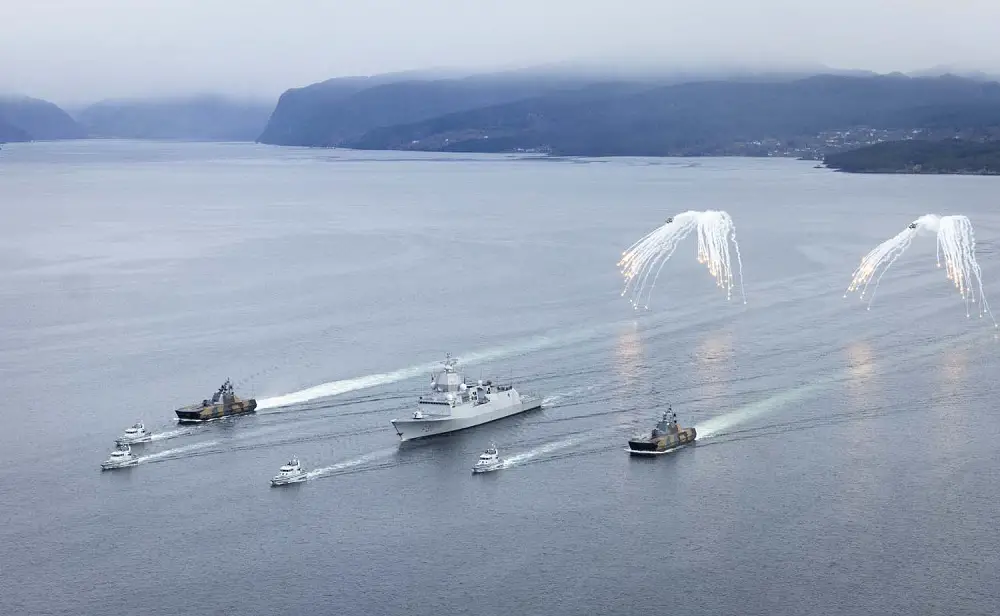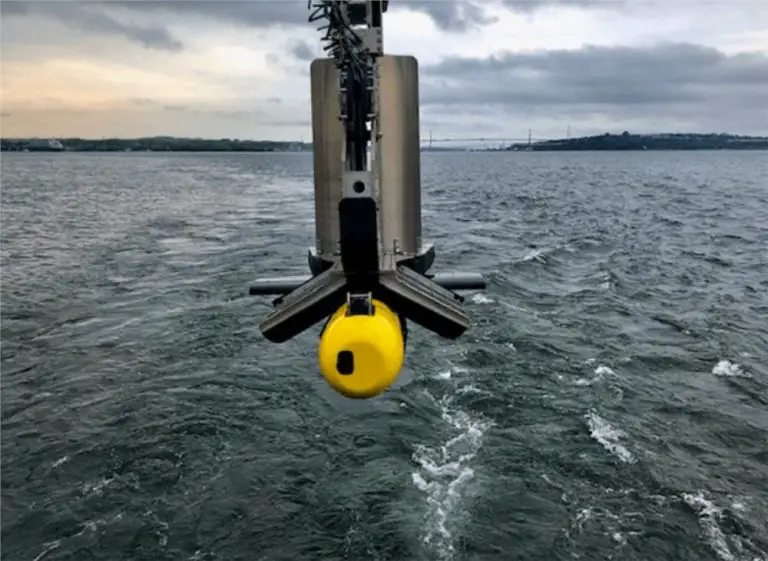The Royal Navy’s Wildcat maritime attack helicopters have demonstrated their ability to hunt down and engage enemy forces during a game of cat and mouse in the Norwegian fjords. Yeovilton-based 815 Naval Air Squadron have been exercising with four of the Royal Navy’s P2000 patrol ships, two Norwegian corvettes and frigate HNoMS Roald Amundsen off Bergen, in one of the world’s most challenging environments, for Exercise Tamber Shield. Alongside the P2000s, the Wildcats were tasked with finding and targeting the Skjold-class corvettes amongst the many inlets and narrow waterways of the fjords. In one particular scenario, HMS Biter and HMS Exploit, part of the Royal Navy’s Coastal Forces Squadron, headed north from Bergen, while fellow P2000s HMS Trumpeter and HMS Blazer headed south to use their skills and expertise to locate the Norwegian vessels before relaying that information to 815 NAS who were charged with making simulated attacks.
Lieutenant Sophie Tulloch, HMS Biter’s Commanding Officer, said: “We worked alongside HMS Exploit and a Wildcat helicopter to locate and destroy two of the Skjold Corvette-class ships which are hiding in a fjord. We would make our way slowly up the fjord in order to identify them and send off their location to the Wildcat, so it can engage. A challenge from the exercise was for HMS Biter to safely navigate up the fjord. Due to the topography we are able to get quite close to the shoreline and remain in very deep water.”
Lieutenant Maxwell Randles-Hall, an 815 NAS Observer, said: “The Norwegian Fjords present a challenging and unforgiving operating area for aircraft. As a result, Wildcat crews must effectively employ every sensor and system to succeed in their mission and evade attack. The topography gifts a significant advantage to the opposition forces, played by the P2000s and Skolds, so crews must think extremely carefully about their every move, working as a team to methodically neutralise targets.”

Capable of 60 knots, the Skjolds are fast and agile – using their camouflage to blend into the landscape, which their crew knows like the back of their hand. Skjold-class corvettes (skjold means “shield” in Norwegian) are a class of six light, superfast, stealth missile corvettes in service with the Royal Norwegian Navy. With a maximum speed of 55 knots (102 km/h), the Skjold-class corvettes were the fastest combat ships afloat at the time of their introduction. However, aircrew from 815 NAS were more than up for the challenge, employing newly developed tactics to fend off the fast attack craft threat. Operating as part of the Joint Expeditionary Force – a group of like-minded nations led by the UK – Exercise Tamber Shield provides extremely valuable training for the crews of the P2000s. Made up of nations including the UK, Norway, Denmark, Finland, Estonia, Iceland, Latvia, Lithuania, the Netherlands and Sweden, the JEF reacts to events in northern Europe’s waters, ready to respond to crises and world events.
The AW159 Wildcat is a further development of the Westland Lynx. While the AW159 shares broad similarities in appearance to the Lynx, it has significant design differences and is heavily modernised and adapted to gain new attributes and functionality. The UK has ordered 34 Wildcats for the British Army and 28 for the Royal Navy. The Army Air Corps formed the Wildcat Fielding Team (Army), which later became 652 (Operational Conversion) Squadron, for trials and operational conversion of Joint Helicopter Command aircrew and ground crew to the type. The Royal Navy also commissioned a Wildcat Fielding Squadron, 700W Naval Air Squadron (700W NAS)[40] in 2009. On 23 March 2015, the Royal Navy’s first Wildcat HMA2 began its initial operational deployment at sea on board HMS Lancaster. By 2024, all 62 Wildcats had been delivered to the British Army and Royal Navy;in excess of 10,000 flight hours had been logged between the services along with a 100 percent availability rate achieved at sea and over 1,200 deck landings performed.















